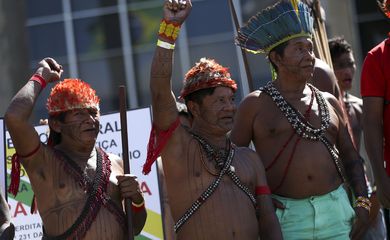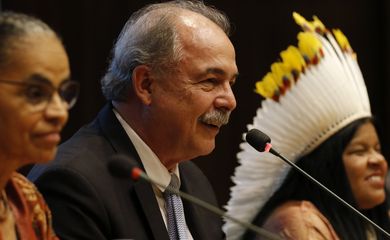Vale do Javari: Gov’t presence ensured peace for years

The Vale do Javari indigenous territory came into the spotlight after Bruno Pereira, a member of the staff of national indigenous agency Funai, and Dom Phillips, a British journalist and correspondent for The Guardian, were brutally murdered back in June last year. Among anthropologists and members of indigenous movements, however, the region was already known for being both home to the world’s largest concentration of isolated groups and an arena for power struggles.

The area is located in the municipalities of Atalaia do Norte and Guajará, in western Amazonas state, in North Brazil. The indigenous people who live there have not always had to struggle with violence, and what kept the problem at bay was the work of public agencies, says Eliesio Marubo, an attorney with Univaja, Vale do Javali’s indigenous association.
“Around the end of 2009, the Federal Police joined efforts with an intelligence team from [Brazil’s environment authority] Ibama. They were active in the region. It was a time of peace for many years,” he remembers.
Despite the peaceful times, he went on to add, before the murder of Phillips and Pereira, there was tension in the air. “The atmosphere was charged with animosities because of the work that Univaja had already been doing. It rose to a peak with the surge of hostilities and crime in the region. As a result, more interests were at stake. And [Pereira] was a stumbling block,” Marubo added.
This Monday (Feb. 27), a government committee should start a task force in the region, aimed at bringing back a sense of shelter and cooperation between officials and locals.
Agência Brasil asked Marubo what he believes could help address their plight. “I think the creation of an outpost in Atalaia do Norte is more effective than having [security and environmental inspection agents] stay in Tabatinga, because it’s further away. So, if they manage to stay closer to Vale do Javari, or if they could set up a mobile unit by the Javari river, crime should probably be reduced,” he suggested.
Violence and greed
With its demarcation ratified in 2001, Vale do Javari covers 8.5 million hectares and the threats it faces are as complex as the territory is extensive. It is the second largest indigenous area in Brazil—second only to the Yanomami lands, with 9.6 million hectares, with which it shares some of the issues, like illegal mining. Researchers and indigenous organizations have repeatedly warned the authorities about the drug dealers, loggers, hunters, fishermen, and miners conducting illegal activities in the region.
Located on Brazil’s national border with Peru, Vale do Javari is also the target of oil exploitation, which has also been opposed by the Matsés, another local group. A surveillance team was created in 2021 with Univaja by the Indigenous Missionary Council (Cimi) to address the vulnerability of the locals.
In September 2019, when Ibama had not yet been so severely hamstrung by the Bolsonaro administration, its representatives deactivated some 60 ferries used in illegal mining in Vale do Javari, as well as in nearby Katuquina do Rio Biá and Cujubim. This was made possible by operation Korubo, jointly conducted by Funai and the Federal Police after five months of planning and preparation.
Also living in the region are 26 groups, of which 19 are in voluntary isolation, including the Mayuruna/Matsés, the Matis, the Kulina Pano, the Kanamari, and the Tsohom-Dyapa. These, along with the Korubo and Marubo, are known to be significantly different in certain aspects, while also sharing major cultural traits, like the Pano language. The population is reported to total 6.3 thousand.
Some of these groups have made contact with non-indigenous just recently. However, for the Kanamari and the Marubo, for instance, contact was first established about a century ago.
A report by ISA, an environmental nonprofit working alongside riverside, indigenous, and quilombola communities, showed a surge in deforestation on indigenous grounds inhabited by isolated peoples in the first half of 2022. In January this year, research institute IPAM released a study pointing out that Amazon territories occupied by isolated groups are more severely threatened than those not occupied by them.
The research discusses the risks targeting basic rights of local indigenous peoples in voluntary isolation: deforestation, wildfire, illegal logging, and mining, in addition to the undermining of public policies aimed at protecting them.





